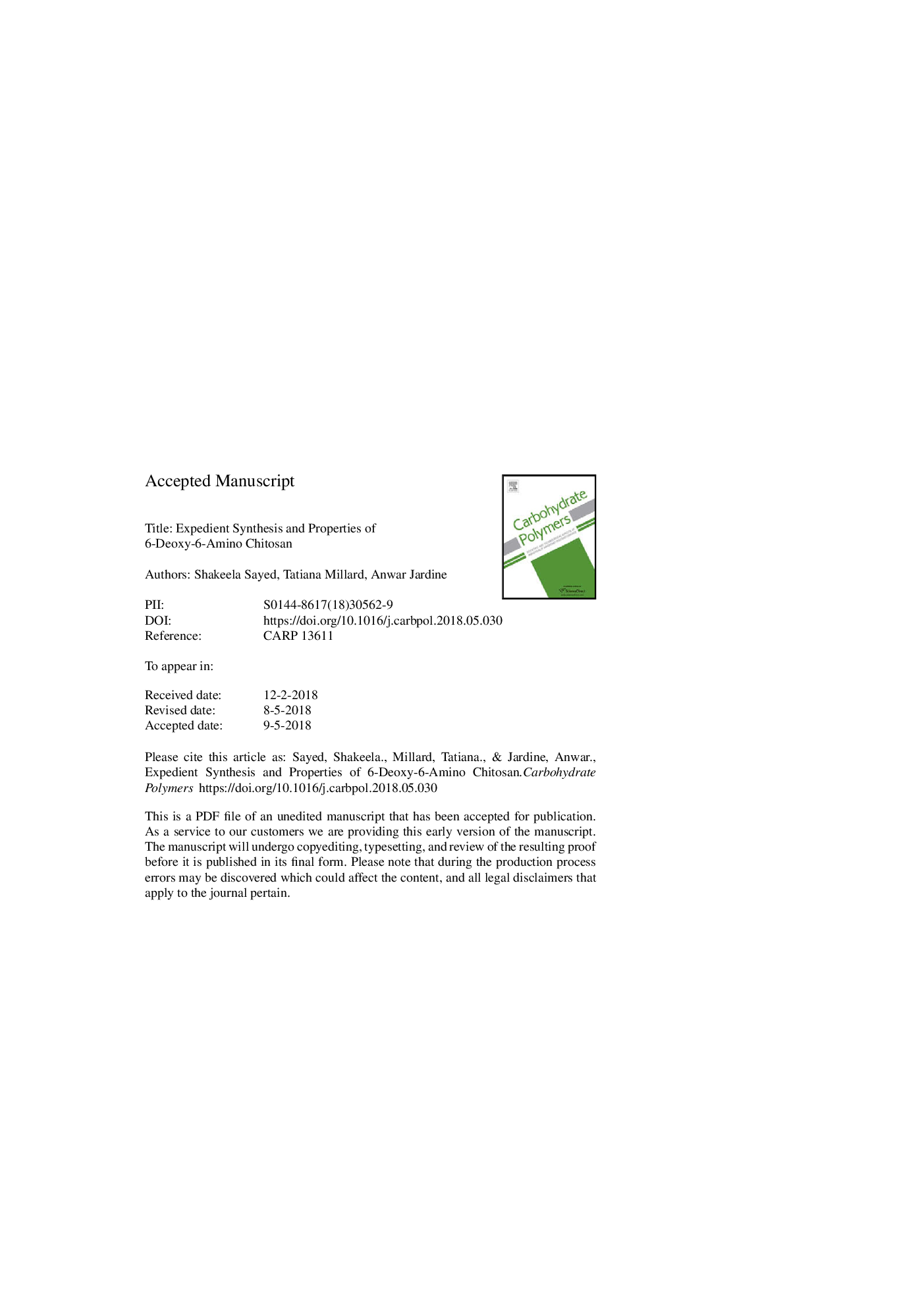| Article ID | Journal | Published Year | Pages | File Type |
|---|---|---|---|---|
| 7781733 | Carbohydrate Polymers | 2018 | 31 Pages |
Abstract
Chitin and chitosan play an important role in the context of a biorefinery where waste is converted into useful products. The introduction of an amine at the C-6 position of chitosan has led to the synthesis of a water-soluble chitosan derivative, 6-deoxy-6-amino chitosan. However, all known synthetic methods for the synthesis of 6-deoxy-6-amino chitosan have some limitations, which acts as impediments to the scale up process and ultimately exploitation. The solubility of the polymer in water is advantageous and opens many different avenues of application. A shorter and scalable synthetic pathway was sought due to the prior use of hazardous solvents and the generation of large quantities of waste. To aid the modification of chitin and chitosan, a model study on the glucosamine monomer was utilised. An innovative synthetic means of introducing an amine at C-6 position of the biopolymer was achieved. Ultimately, this expedient synthesis of 6-deoxy-6-amino chitosan resulted in a much-improved yield and quality of 6-deoxy-6-amino chitin and chitosan. Additionally the synthesis of an alkylamino derivative was also considered. The antimicrobial properties of the improved synthetic chitosan derivatives was evaluated and compared against material prepared from prior synthetic routes.
Related Topics
Physical Sciences and Engineering
Chemistry
Organic Chemistry
Authors
Shakeela Sayed, Tatiana Millard, Anwar Jardine,
